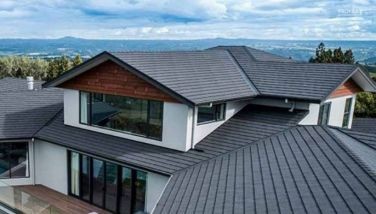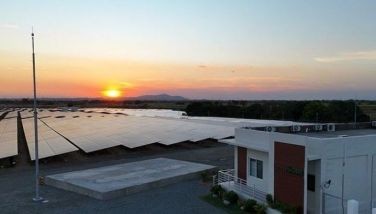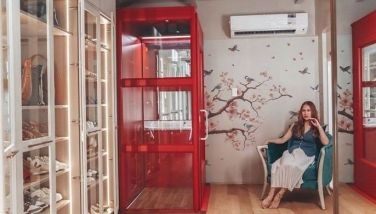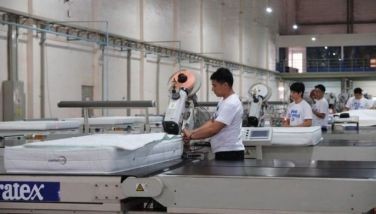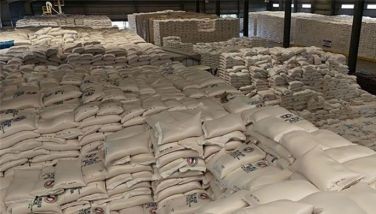Transforming an island

An hour’s flight from Manila, this sprawling odd-shaped patch of earth in Antique is full of surprises and irony.
Where, for instance, can you find hectares and hectares of pitch black, smoking and scorching dry coal in some parts and turquoise blue waters, a fine white sand beach and fresh air on the other end?
This is Semirara Island, which is part of the municipality of Caluya in the province of Antique in the Western Visayas region.
The island itself has an area of some 5,000 hectares and is home to the country’s richest coal reserves.
It is indeed the country’s biggest coal mine and yet deep into its forests, past wild bushes, across its dusty and maze-like terrain, reached best by a hulking Land Rover, is paradise.
This is what I saw the first time I visited Semirara six years ago.
In late May, I joined tycoon Isidro Consunji for another visit to the island. It was a quick day trip when he hosted a group of visiting investors.
As I was when I first visited Semirara in 2017, I found myself in awe again of this island of black gold the second time around.
But more so now because I saw the rehabilitation work that Consunji-led Semirara Mining & Power Corp. (SMPC) has been doing. SMPC has the exclusive rights to explore, extract and develop the island, which is the largest coal mine in the country
Rehabilitation
SMPC embarked on a P2.92-billion rehabilitation program for the Panian Mine, one of the coal mines in the island which, after 16 years, had been totally mined out.
As instructed by the Department of Energy (DOE) under then Secretary Alfonso Cusi, the mines had to be rehabilitated to repair the land disturbed by mining activities or make it even better than the barren pastureland of wild bushes and weeds that it was before mining operations started more than a decade ago.
The first step in rehabilitating the mine was to refill it to bring it back to its normal elevation.
This was as daunting as it could be and it took years to complete. I imagine a process similar to reclamation.
By June 2019, or three years since the mine closed, South Panian had been completely refilled.
In all, Panian had a mine life of 16 years and generated P12.7 billion in royalties for the Philippine government and SMPC host communities.
Of the total amount, P7.6 billion went to the national government while the municipality of Caluya and Barangay Semirara received P2.3 billion and P1.8 billion, respectively. P1 billion went to the province of Antique.
After refilling, it was time to start planting trees on the now promising new forest land.
March 2020 marked the beginning of the reforestation of the former mine pit and this was what I saw during my recent visit last May.
By August 2021, SMPC had planted 439,647 trees in South Panian, consisting of beach agoho, balete, molave, fire tree, narra and bamboo.
When I was there, I was invited to plant a molave tree and I fervently hope it survives and thrives. I even saw birds in the newly reforested area.
Speaking of birds, I also saw the aviary which SMPC, in partnership with the DOE, established as the Semirara Biodiversity Conservation Center (SBCC). The locals call it The Aviary.
It is dedicated to rehabilitating, protecting and restoring biodiversity in the island.
Here, SMPC extended its efforts from propagating endangered marine species to preserving terrestrial wildlife and promoting sustainable land use.
Pavel Hospodarsky, a Czech bird specialist and consultant with almost three decades of experience in designing and implementing wildlife conservation projects in several countries, gladly took me around the aviary. I saw birds of different colors – beautiful, elegant and alive.
Somewhere in this labyrinthine land, there’s also a hatchery that propagates seven endangered species of giant clams and other marine life.
The late Angel Alcala, a marine biologist and National Scientist, helped SMPC establish the hatchery, together with two other national scientists.
That the giant clams can thrive in the waters of Semirara is telling. After all, these endangered marine treasures survive only in a safe and unpolluted marine environment and thus, are a significant indicator for determining the health of coral reefs in the island.
SMPC has bred at least 151,638 giant clams, proving that its coal mining operations have no detrimental impact on the aquatic ecosystem of Semirara Island.
A model for legacy mines
It’s good that Semirara is rehabilitating the coal pits. It should indeed be a model for legacy mines. It is a pragmatic move that recognizes the negative impact of mining activities on the environment.
Some say the end of the coal era is here.We have yet to see if the alternative energy sources, mainly renewable energy, would be affordable enough to power the country’s electricity requirements.
For sure, coal’s negative impact on the environment cannot be denied, but it served its purpose at a time when there was no alternative yet.
Moving forward, however, whether it is coal or other resources, I hope that the government will make sure that all big businesses that mine the country’s natural resources will rehabilitate the communities, islands or the mountains whose resources they’ve extracted.
As for Semirara Island, the once sleepy, isolated and nearly forgotten island transformed and developed over time because of SMPC and its coal operations. It is what it is.
Time will tell what happens next in this enigmatic island of black gold.
* * *
Email: eyesgonzales@gmail.com. Follow her on Twitter @eyesgonzales. Column archives at EyesWideOpen on FB.
- Latest
- Trending










